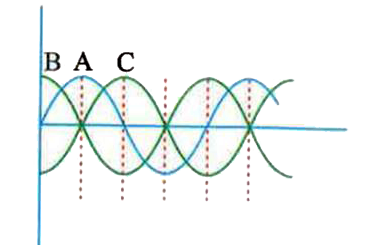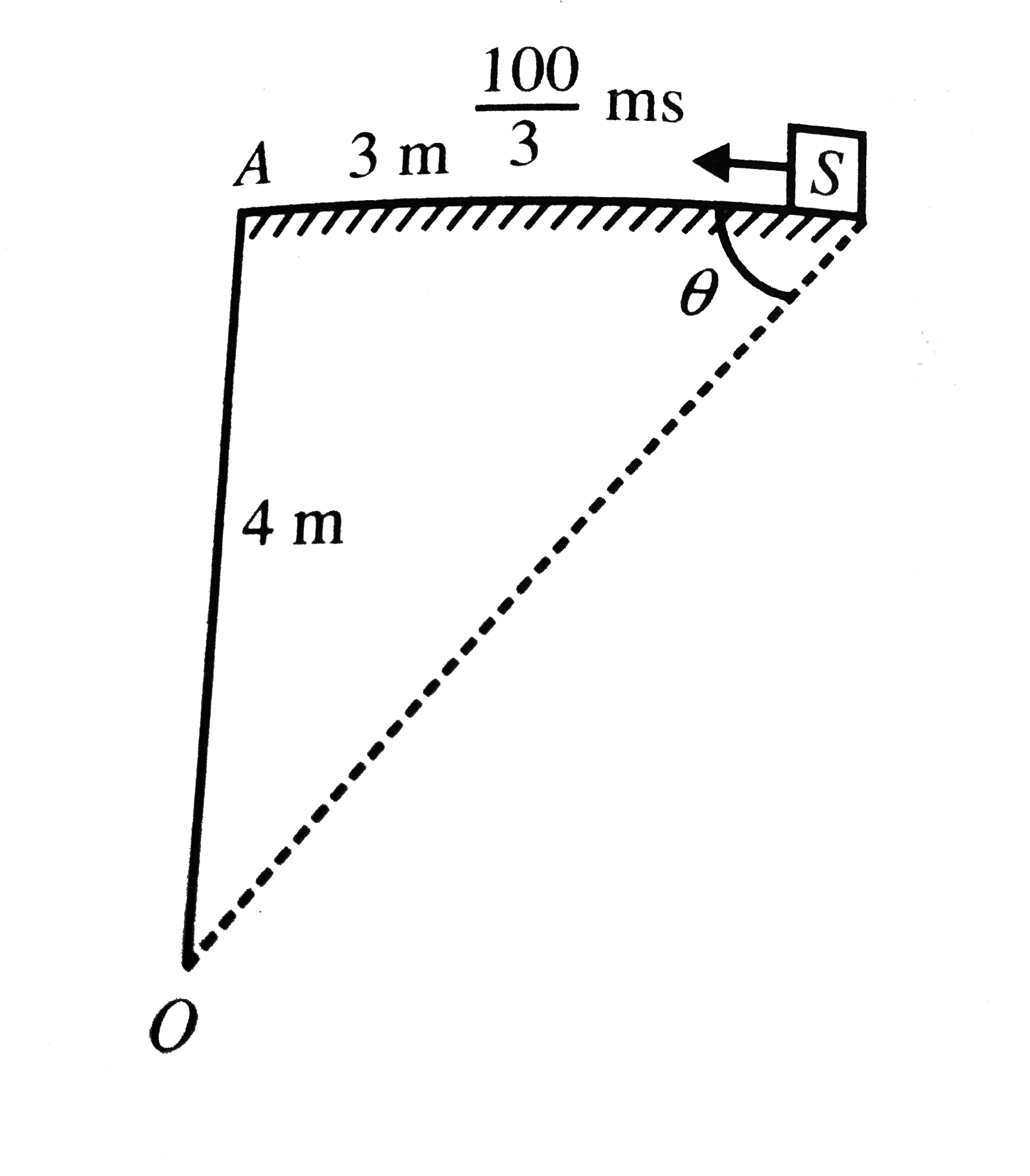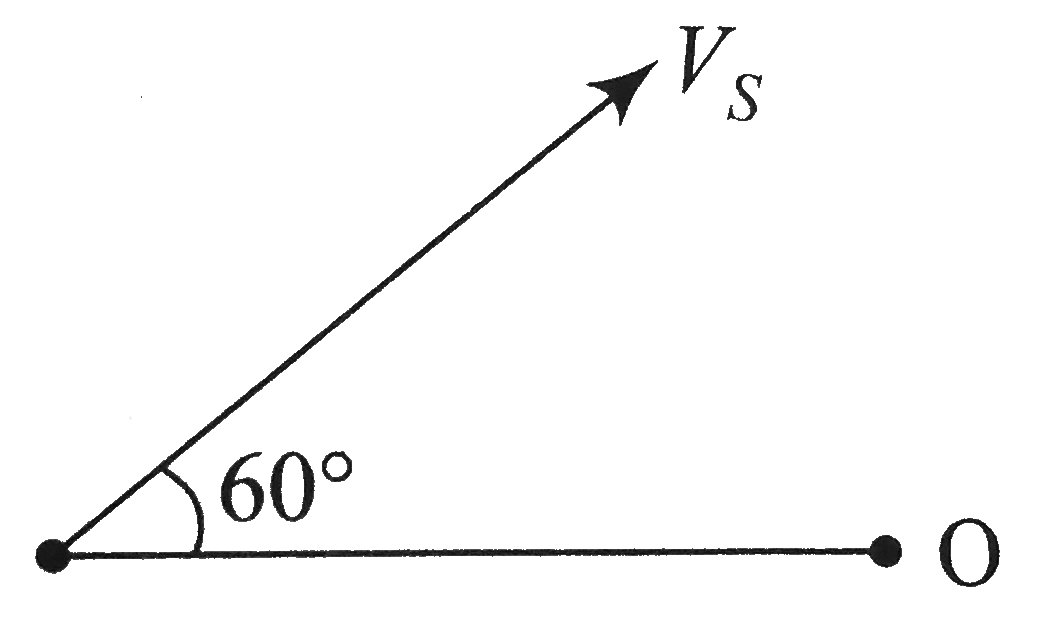Complete Solutions to Exercise-III of chapter WAVES of Class 11 book with complete answers and questions
| Class 11 | PHYSICS |
| Chapter | WAVES |
| NARAYANA | Exercise-III |
| Number Of Questions | 56 |
| Academic Year | 2023-24 |
Which of the following statements is true ?
View SolutionA transverse wave propagating along x-axis is represented by: `y(x,t)=8.0sin(0.5pix-4pit-(pi)/(4))` Where `x` is in metres and `t` is in seconds. The speed of the wave is:
View SolutionTwo sound waves with wavelengths `5.0 m` and `5.5 m` respectively, each propagates in a gas with velocity `30m//s` We expect the following number of beats per second:
View SolutionVelocity of star is `10^(6)m//s` and frequency of emitted light is `4.5X10^(14)Hz`. If star is moving away, then apparent frequency will be
View SolutionA boat at anchore is rocked by waves whose crests are `100m` apart and velocity is `25 m//s` The boat bounces up once in every
View SolutionWhich of the following is true regarding beats ?
View SolutionThree progressive waves `A,B,C` are shown in the figure

With respect to A, the progressive wave
View SolutionThe intensity of sound increases at night due to
View SolutionA boat at anchor is rocked by waves whose crests are `100 m` apart and whose speed is `25 m//s`. These waves reach the boat once every :
View SolutionThe equation of a wave travelling on a string is `y=4sin[(pi)/(2)(8t-(x)/(8))]`, where `x,y` are in cm and t in second. They velocity of the wave is
View SolutionAn observer moves towards a stationary source of sound with a speed `((1)/(5))`th of the speed of sound. The wavelength and frequency of the source emitted are `lamda` and f, respectively. The apparent frequency and wavelength recorded by the observer are, respectively.
View SolutionTwo waves having the intensities in the ratio of `9 : 1` produce interference. The ratio of maximum to minimum intensity is equal to
View SolutionThe wave decribed by `y=0.25sin(10pix-2pit)`. Where x and y are in metre and t is second, is a wave travelling along the Therefore, the wave is travelling along `+ve` x direction with frequency `1 Hz `and wavelength `0.2m`
View SolutionThe equation of a simple harmonic wave is given by `Y = 5sin""pi/2(100t - x)`, where x and y are in metre and time is in second. The time period of the wave (m seconds) will be
View SolutionA tuning fork A produces `4` beats `s^(-1)` with another tuning fork B of frequency `320Hz`. `ON` filing one of the prongs of A, `4` beats `s^(-1)` are again heard when sounded with the same fork B. Then the frequency of the fork a before filling is
View SolutionTwo sound waves of slightly different frequencies propagating in the same direction produce beats due to
View SolutionChange in frequency due to Doppler's effect is produced when
View SolutionTwo points are located at a distance of `10 m` and `15 m` from the source of oscillation. The period of oscillation is `0.05 `s and the velocity of the wave is `300m//s`. What is the phase difference between the oscillation of two points?
View SolutionThe driver of a car travelling with speed `30ms^-1` towards a hill sounds a horn of frequency 600 Hz. If the velocity of sound in air is `330ms^-1`, the frequency of reflected sound as heard by driver is
View SolutionEach of the two strings of length `51.6 cm` and `49.1 cm` are tensioned separately by `20 N` force. Mass per unit length of both the strings is same and equal to `1 g//m`. When both the strings vibrate simultaneously, the number of beats is
View SolutionIf `lambda_(1), lamda_(2)and lamda_(3)` are the wavelengths of the wave giving resonance with the fundamental, first and second overtones respectively of a closed orga pipe Then the ratio of wavelength `lambda_(1), lamda_(2)and lamda_(3)` is
View SolutionThe ratio of intensities between two coherent sound sources is `4:1` the difference of loudness in decibels between maximum and minimum intensities, when they interfere in space, is
View SolutionA closed organ pipe of length 1.2 m vibrates in its first overtone mode. The pressure variation is maximum at
View SolutionA wave in a string has an amplitude of `2 cm`. The wave travels in the `+ve` direction of x axis with a speed of 1`28 ms^-1` and it is noted that `5` complete waves fit in `4 m` length of the string. The equation describing the wave is
View SolutionA tuning fork of frequency 512 Hz makes 4 beats//s with the vibrating string of a piano. The beat frequency decreases to 2 beats//s when the tension in the piano string is slightly increased.The frequency of the piano string before increasing the tension was
View SolutionA transverse wave is represented by `y=Asin(omegat-kx)`. For what value of the wavelength is the wave velocity equal to the maximum particle velocity?
View SolutionThe equation `y=4+2 sin (6t-3x)` represents a wave motion. Then, wave speed and amplitude, respectively are
View SolutionTwo waves
` y_(1) =A_(1) sin (omega t - beta _(1)), y_(2)=A_(2) sin (omega t - beta_(2)`
Superimpose to form a resultant wave whose amplitude is
View SolutionA fork A has frequency `2%` more than the standard fork and B has a frequency `3%` less than the frequency of same standard frok. The forks A and B when sounded together produced 6 beats/s. The frequency of fork A is
View SolutionTwo instruments having stretched strings are being played in unison . When the tension in one of the instruments is increases by ` 1% , 3` beats are produced in ` 2 s`. The initial frequency of vibration of each wire is
View SolutionA point source emits sound equally in all directions in a non-absorbing medium. Two point `P` and `Q` are at distance of `2 m` and `3 m` respectively from the source. The ratio of the intensities of the wave at `P` and `Q` is :
View SolutionSounds waves travel at `350m//s` through a warm air and at `3500m//s` through brass. The wavelength of a `700 Hz`. Acoustic wave as it enters brass from warm air
View SolutionA source of sound moves towards an observer with a velocity `108km//h` and the observer also moves towards the source with the velocity `5` km/h, then the velocity of sound is
View SolutionA train is moving with a constant speed along a circular track. The engine of the train emits a sound of frequency f. The frequency heard by the guard at the rear end of the train.
View SolutionThe equation of a wave is `y=5sin((t)/(0.04)-(x)/(4))` where `x` is in cm and t is in seccond. The velocity of the wave will be
View SolutionTwo vibrating strings of the same material but lengths `L` and `2L` have radii `2r` and `r` respectively. They are stretched under the same tension. Both the string vibrate in their fundamental nodes, the one of length `L` with freuqency `v_(1)` and the other with frequency `v_(2)`. the ratio `v_(1)//v_(2)` is given by
View SolutionTwo waves are represented by the equations
`y_(1)=asin(omegat+kx+0.57)m` and
`y_(2)=acos(omegat+kx)`m,
where x is in metres and t is in seconds. The phase difference between them is
View SolutionA source of sound S is moving with a velocity of `50m//s` towards a stationary observer. The observer measures the frequency of the source as 1000 Hz. What will be the apparent frequency of the source as 1000 Hz. What will be the apparent frequency of the source when it is moving away from the observer after crossing him? The velocity of the sound in the medium is `350m//s`
View Solution
A source of sound S is travelling at `(100)/(3)(m)/(s)` along a road, towards a point A. When the source is 3 m away from A, a person standint at a point O on a road perpendicular to AS hears a sound of requency `v'`. The distance of O from A at that time is 4 m. If the original frequency is 640 Hz, then the value of `v'` is (velocity of sound is `340(m)/(s)`)
View SolutionThe equation of a simple harmonic wave is given by
`y = 3 sin"(pi)/(2) (50t - x)`
where `x` and `y` are in meters and `x` is in second .The ratio of maximum particle velocity to the wave velocity is
View SolutionA train moving at a speed of `220ms^-1` towards a stationary object emits a sound of frequency 1000 Hz. Some of the sound reaching the object gets reflected back to the train as echo. The frequency of the echo as detected by the driver of the train is (speed of sound in air is `330ms^(-1)`)
View SolutionWhen a string is divided into three segments of
lengths `l_(1),l_(2) and l_(3)` the fundamental frequencies of
these three segments are `v_(1), v_(2) and v_(3)` respectively.
The original fundamental frequency (v) of the string is
View SolutionTwo sources of sound placed closed to each other, are emitting progressive waves given by
`y_(1)=4 sin 600 pi t`
and `y_(2)=5 sin 608 pi t`
An observer located near these two sources of sound will hear
View SolutionIf we study the vibration of a pipe open at both ends, then the following statements is not true
View SolutionA source of unknown frequency gives 4 beats//s, when sounded with a source of known frequency 250 Hz. The second harmonic of the source of unknown frequency gives five beats per second, when sounded with a source of frequency 513 The unknown frequency is
View SolutionA wave travelling in the `+ve` x-direction having displacement along y-direction as 1`m`, wavelength `2pi` m and frequency of `1//pi` Hz is represented by
View SolutionIf `n_(1), n_(2 ) "and" n_(3)` are the fundamental frequencies of three segments into which a string is divided, then the original fundamental frequency n of the string is given by
View SolutionA speed ign motorcyclist sees traffic ham ahead of him. He slows doen to `36 km//h` He finds that traffic has eased and a car moving ahead of him at `18 km//h` is honking at a frequency of 1392 Hz. If the speed of sound is `343m//s`, the frequency of the honk as heard by him will be
View SolutionThe number of possible natural oscillations of air column in a pipe closed at one end of length 85 cm whose frequencies lie below 1250 Hz are (velocity of sound `=340ms^(-1)`).
View Solution
A source of sound `S` emitting waves of frequency `100 Hz` and an observer `O` are located at some distance from each other. The source is moving with a speed of `19.4ms^-1` at an angle of `60^(@)` with the source observer line as shown in the figure. The observer is at rest. The apparent frequency observed by the observer (velocity of sound in air `330ms^-1`) is
View SolutionA string is stretched between fixed points separated by `75.0cm`. It is observed to have resonant frequencies of `420 Hz` and `315 Hz`. There are no other resonant frequencies between these two. Then, the lowest resonant frequency for this string is
View SolutionThe fundamental frequency of a closed organ pipe of length `20 cm` is equal to the second overtone of an organ pipe open at both the ends. The length of organ pipe open at both the ends is
View SolutionThree sound waves of equal amplitudes have frequencies (n-1) ,n (n+1) .They superimpose to give beats.The number of beats produced per second will be
View SolutionThe second overtone of an open organ pipe has the same frequency as the first overtone of a closed pipe `L` metre long. The length of the open pipe will be
View SolutionA siren emitting a sound of frequency 800 Hz moves away from an observer towards a cliff at a speed of `15ms^-1`. Then the frequency of sound that the observer hears in the echo reflected from the cliff is (Take velocity of sound in air `=330ms^-1`)
View SolutionA uniform rope of legnth `L` and mass `m_1` hangs vertically from a rigid support. A block of mass `m_2` is attached to the free end of the rope. A transverse pulse of wavelength `lamda_1` is produced at the lower end of the rope. The wavelength of the pulse when it reaches the top of the rope is `lamda_2`. The ratio `(lamda_2)/(lamda_1)` is
View Solution
Exercise-III questions and complete solutions for chapter WAVES of NARAYANA PHYSICS (HINGLISH) of Class 11